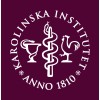
The Role of Dry Needling in Hallux Valgus
Hallux ValgusMyofascial Pain SyndromeForty Hallux valgus patients between the ages of 25-65 years, who are admitted to the Physical Medicine and Rehabilitation clinic with the complaint of 1st Metatarsophalangeal (MTF) pain and who meet the inclusion and exclusion criteria will be included. Hallux valgus (HV) angles will be measured by dorsoplantar radiography before the patients start the study. The HV angle was measured as the angle between the bisection line of the first metatarsal bone and the first proximal phalanx. Demographic data (age, gender, body mass index) will be recorded at the beginning of the study. Then, the initial Foot Functional Index (FFI) and Visual Analog Scale (VAS) scales were completed. The 1st MTF joint angle was also measured with a goniometer and recorded before starting the study. The patients were divided into two groups. The first group will be given 3 sessions of dry needling with Seirin branded 0.6*50 mm acupuncture needles for trigger point in the abductor hallucis muscle and toe-spread-out exercise. The second group will receive only toe-spread-out exercises. After starting the treatment, FFI and VAS scores and 1st MTF angles will be measured and recorded weekly with a goniometer. At the end of the 3-week treatment, the FFI and VAS scores of the participants will be re-evaluated after 1 week and 1 month, and the participants will be re-evaluated with a goniometer. The hallux valgus angle will be re-evaluated with X-ray 4 weeks after the end of the treatment.

The Effect of tDCS in the Preoperative Period of Hallux Valgus Surgical Treatment
Chronic PainHallux ValgusThis is a clinical trial that intend to determine if transcranial direct current stimulation (tDCS) is effective in the treatment of postoperative pain and in the anxiety level in the preoperative period of hallux valgus surgical treatment

Phase 3, Randomized, Double Blinded, Active Controlled, Multicenter Study to Evaluate the Efficacy,...
BunionMetatarsophalangeal Fusion4 moreThis is a Phase 3, multicenter, randomized, double blinded, active controlled study in approximately 81 subjects undergoing lower extremity surgeries with combined sciatic and adductor canal nerve block.

5 Year Radiological and Clinical Results From Patients Operated for Hallux Valgus Deformity.
Hallux ValgusRetrospective study of patients operated for hallux valgus deformity at our hospital (ostfold hospital trust) 5 years ago. Patients will be clinically examined, a weighted radiograph of the foot (traditional and newer parameters will be evaluated) and patient reported outcome measures (PROM) scores will be collected.

A Study Comparing Etoricoxib and Diclofenac Sodium in Post Hallux Valgus Surgery Pain
Hallux ValgusPostoperative PainThe investigators hypothesize that cyclooxygenas-II-selective inhibitors (Coxibs) provide a better patients assessed overall satisfaction when used for pain management after elective hallux valgus surgery as compared to traditional Non-steroidal anti-inflammatory drugs (NSAIDs).

Hallux Valgus and Custom Orthotic Prescription
Hallux ValgusHallux valgus can be defined as a progressive subluxation of the first metatarsophalangeal joint and lateral deviation of the hallux. This common foot condition is associated with altered gait patterns. Specifically reduced forward propulsion, leading to gait instability. Research has shown that foot problems and pain play a major role towards the contribution of falls in the adult population. There are currently two main interventions for the treatment of hallux valgus: surgery and orthotic prescription. There has not been a lot of research performed evaluating the effects of custom orthotic prescription on hallux valgus. Therefore, this study will investigate adults with moderate hallux valgus and the effects of orthotic intervention on the efficacy of forward propulsion during walking. It is hypothesized that implementation of an orthotic will lead to decreased foot pain, an increase in step length, an increase in the forward moment about the ankle and hallux, and a more medial center of pressure tracking through the great toe instead of the lesser metatarsals. This study will consist of 10 adults. The participant will go through three rounds of testing in the lab. The first session will consist of initial baseline testing in which each participant will be evaluated for severity of Hallux Valgus and range of motion of the first metatarsophalangeal joint. A foot casting will then be performed by a pedorthist and the participant will be set up with markers, so as to record motion while they perform 15 walking trials across a 10m runway with a force plate embedded in the middle whilst wearing standard footwear (no orthotic). The second lab session will consist of the standard footwear (no orthotic) walking as well as the addition of standard footwear with custom orthotic walking. The third session, after having worn the orthotic for two weeks, will repeat both conditions measured in the second lab session. Data about the center of pressure trajectories, step length, foot pain, and the moments about the ankle and first metatarsophalangeal joints will be collected and calculated.

Comparison of the Effects of Advanced Exercise Treatment Performed Under the Supervision of a Physiotherapist...
ExerciseHallux ValgusThe aim of our study is to compare the effects of progressive exercise therapy, administered as a home program under the supervision of a physiotherapist, on adduction angle, pain, functional status, quality of life, and kinesiophobia in individuals aged 18-64 years with a hallux valgus angle of 15-40 degrees (mild-moderate).

Early Weight-Bearing After Lapidus Arthrodesis
ArthrodesisBunion1 moreThe goal of this research study is to determine if union rates are affected by early weight-bearing after Lapidus Arthrodesis using the Phantom™ Intramedullary Nail. The study hypothesis is that the union rate for those who undergo a Lapidus Arthrodesis procedure with the Phantom™ Intramedullary Nail and participate in an early weight-bearing protocol will be non-inferior to union rates previously published for this procedure.

Prospective Trial of Minimally Invasive Surgery Versus Standard Surgery for Correction of Hallux...
Hallux ValgusHallux valgus is a common deformity of the big toe, defined as medial deviation of the first metatarsal bone along with lateral deviation of the first toe. Surgery has been shown to be beneficial when compared to orthotics or no treatment. While generally effective, surgery is associated with significant post-operative pain and disability, with several weeks of limited mobility. Minimally invasive techniques have the potential to lead to increased patient satisfaction while still achieving adequate correction of the deformity. This trial is a non-inferiority treatment study, with open-label, randomized, prospective, controlled, parallel experimental design, to compare the clinical and radiographic outcomes of a minimally invasive surgery versus a conventional surgery for hallux valgus. This trial examines two different surgical interventions. No drug or device is being evaluated in this trial. 60 to 100 patients, over the age of 18 years, undergoing surgical correction of mild to moderate hallux valgus will be enrolled in the trial. The patients will be randomized to two groups, one treated with a conventional distal osteotomy surgery, the other treated with a minimally invasive surgery. Randomization will occur immediately prior to surgery via a multitude of opaque envelopes containing a coded group assignment. Due to the differences in the techniques, neither the investigator and the subject can be effectively blinded to the group assignment. Data collection for the outcomes measures will occur preop, and then post of at 2 weeks, 12 weeks, and at 1,2, and 3 years. The primary outcomes measure is the Manchester-Oxford Foot Questionnaire Score (MOXFQ). Manchester-Oxford Foot Questionnaire' (MOXFQ), a 16 item patient-reported questionnaire consisting of three domains/scales: 'Walking/standing' (seven items), 'Pain' (five items) and 'Social interaction' (four items). The MOXFQ is a validated disease-specific outcomes scale for foot and ankle surgery which has been shown to be responsive and reliable. Secondary outcome measures are preoperative to postoperative change in hallux valgus angle (HVA). Radiographic outcomes parameters will be measured using weight-bearing radiographs to analyze preoperative and postoperative hallux valgus angle, and the correction or normalization thereof. (Degrees of correction = 2 week preoperative HVA - 12 week postoperative HVA.)

Measurement of Arch Motion After Bunion Surgery
Hallux ValgusInstability of the Foot ArchThis study is an observational "change from baseline" outcome measures design. Data is collected for the sake of evaluating treatment (fusion surgery) performed as standard medical care, but the investigator does not assign specific interventions to any participants in this study.
